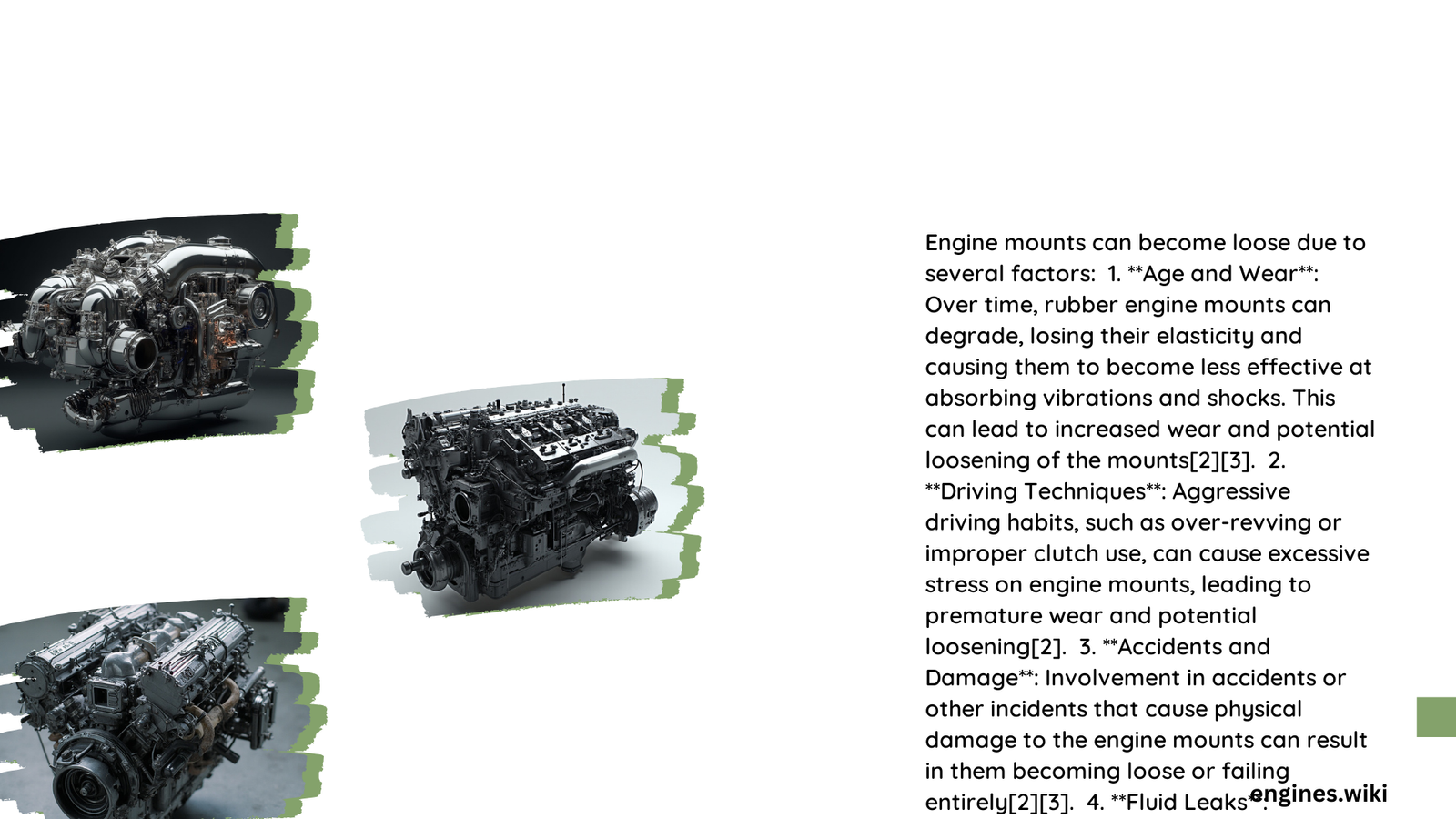Engine mounts are critical components that support and stabilize your vehicle’s engine, absorbing vibrations and preventing excessive movement. Over time, these mounts can indeed become loose due to material fatigue, environmental stress, and normal wear and tear. Understanding the signs, causes, and potential consequences of loose engine mounts is essential for maintaining your vehicle’s performance and preventing costly damage.
What Causes Engine Mounts to Become Loose?
Material Degradation Factors
Engine mounts typically become loose through several key mechanisms:
- Rubber Composition Breakdown
- Natural aging process
- Exposure to extreme temperatures
-
Chemical degradation
-
Mechanical Stress
- Constant engine vibrations
- Repeated thermal cycling
- Uneven road conditions
Environmental Impact Table
| Environmental Factor | Potential Mount Damage | Severity Level |
|---|---|---|
| Temperature Extremes | Rubber Hardening | High |
| Road Salt Exposure | Corrosion | Medium |
| Moisture Accumulation | Metal Component Rust | Medium-High |
How Can You Detect Loose Engine Mounts?

Symptom Identification
Recognizing loose engine mounts involves monitoring several key indicators:
- Excessive Vibration
- Noticeable shaking during idle
- Increased engine movement during acceleration
-
Vibrations transferring through steering wheel
-
Unusual Sounds
- Clunking noises
- Metallic rattling
- Thumping sounds from engine compartment
What Are the Potential Consequences?
Performance and Safety Risks
Loose engine mounts can lead to significant vehicle complications:
- Transmission Damage
- Misalignment of drivetrain components
- Increased wear on transmission mounts
-
Potential gear shifting irregularities
-
Structural Integrity Compromise
- Accelerated wear on surrounding components
- Potential electrical system damage
- Risk of additional mechanical failures
When Should You Replace Engine Mounts?
Diagnostic Recommendations
Professional mechanics suggest:
- Inspect engine mounts every 50,000-70,000 miles
- Check for visible cracks or rubber deterioration
- Listen for unusual sounds during vehicle operation
- Perform professional diagnostic assessment annually
Cost Considerations
Replacement and Repair Insights
| Mount Replacement Type | Average Cost Range | Complexity |
|---|---|---|
| Single Mount Replacement | $200 – $450 | Low |
| Complete Mount Set | $500 – $1,000 | Medium |
| Professional Installation | Additional $100 – $300 | Varies |
Expert Maintenance Tips
Proactive Care Strategies
- Avoid aggressive driving
- Maintain regular vehicle inspections
- Address mounting issues promptly
- Use high-quality replacement mounts
Conclusion
Understanding how engine mounts become loose empowers vehicle owners to prevent potential mechanical failures. Regular inspection, timely maintenance, and professional assessment are key to ensuring optimal vehicle performance and longevity.
Reference:
– SAE International Vehicle Dynamics Research
– Automotive Maintenance Guidelines
– Professional Mechanic Association
